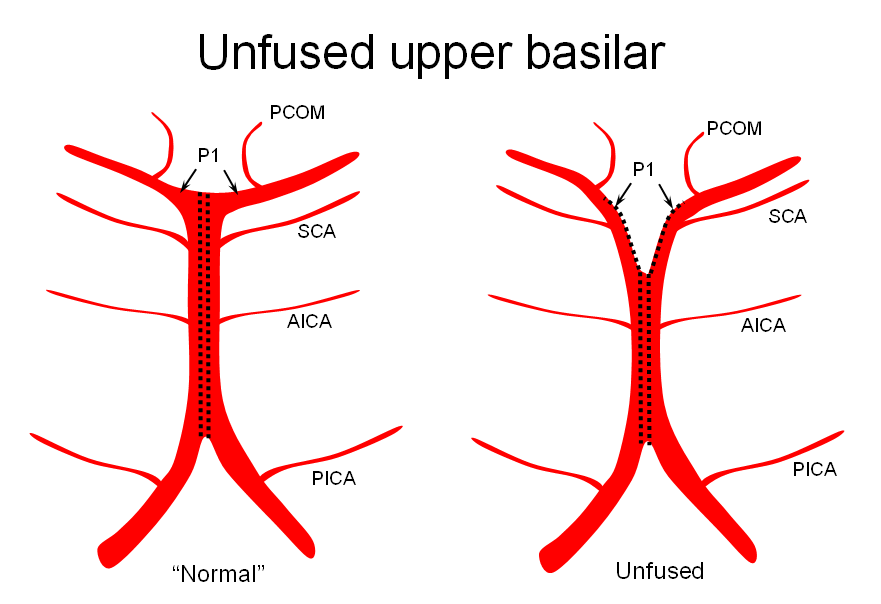
Pseudotumoral infarcts are responsible for the development of increased pressure within the posterior fossa and intracranially and may mimick posterior fossa tumors. The posterior inferior cerebellar artery (PICA), with its unique anatomical complexity, is of great clinical importance and involved in many diseases including aneurysm, ischemic stroke, neurovascular compression syndrome (NVCS), arteriovenous malformation (AVM), and brain tumor. Dysarthria is a characteristic symptom of SCA territory infarction. Cerebellovestibular signs are prominent in patients with partial occlusion of the SCA territory. The SCA infarcts often provoke edema with brainstem compression and herniation of the cerebellar tonsils. The most common symptoms are vertigo or dizziness, vomiting, abnormal gait, headache, and dysarthria.

The clinical presentation of ischemia in the territories of the various cerebellar arteries depends on whether the ischemia affects only the cerebellum, only the brainstem, or a combination of brainstem and cerebellum. Because of its developmental relationship to the posterior spinal (lateral spinal) system, its behavior is unlike that of SCA and AICA. Cerebellar infarcts are often characterized by associated non-specific symptoms, transposing into clinical conditions difficult to diagnose. Its evolution in terms of cerebellar supply and secondary balance with superior cerebellar artery and AICA, give rise to unprecedented variability. The most common locations for cerebellar infarcts are the posterior inferior cerebellar artery (PICA) and superior cerebellar artery (SCA) territories and they are about equally involved. Anatomy photo:28:09-0225 at the SUNY Downstate Medical Center.This article incorporates text in the public domain from page 580 of the 20th edition of Gray's Anatomy (1918) External links Severe occlusion of this artery or to vertebral arteries could lead to Horner's Syndrome as well.


However, a comprehensive systematic review of the importance of the PICA is currently lacking. Sensory deficits affecting the trunk (torso) and extremities on the opposite side of the infarction. Highlighted is the posterior inferior cerebellar artery (PICA) from its origin off the. The posterior inferior cerebellar artery (PICA), with its unique anatomical complexity, is of great clinical importance and involved in many diseases including aneurysm, ischemic stroke, neurovascular compression syndrome (NVCS), arteriovenous malformation (AVM), and brain tumor. The medial branch continues backward to the notch between the two hemispheres of the cerebellum while the lateral supplies the under surface of the cerebellum, as far as its lateral border, where it anastomoses with the anterior inferior cerebellar and the superior cerebellar branches of the basilar artery.īranches from this artery supply the choroid plexus of the fourth ventricle.Ī disrupted blood supply to posterior inferior cerebellar artery due to a thrombus or embolus can result in a stroke and lead to lateral medullary syndrome. Wallenberg syndrome Lateral medullary syndrome (aka 'PICA' syndrome Posterior Inferior Cerebellar Artery syndrome) Constellation of neurologic symptoms due to injury to the lateral part of the medulla in the brain. It winds backward around the upper part of the medulla oblongata, passing between the origins of the vagus nerve and the accessory nerve, over the inferior cerebellar peduncle to the undersurface of the cerebellum, where it divides into two branches.


 0 kommentar(er)
0 kommentar(er)
